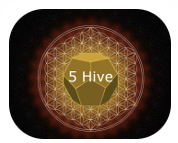There is a new film about 5-MeO being released and promoted. I was wondering if anyone knows the folks behind it and of anyone has had a chance to watch it yet (it is very new). Perhaps the producers, directors are members here and could tell us all a little more about it ?
http://5meomovie.com/
https://vimeo.com/ondemand/5meomovie
https://www.youtube.com/watch?v=TDAjlGY2Z1c&feature=youtu.be&fbclid=IwAR0CGKU64UzjqArFyhs-1nNFtWE4V6DRpWmFO5n5kEYLkHmdnWzYM51Yt4g
cheers all
http://5meomovie.com/
https://vimeo.com/ondemand/5meomovie
https://www.youtube.com/watch?v=TDAjlGY2Z1c&feature=youtu.be&fbclid=IwAR0CGKU64UzjqArFyhs-1nNFtWE4V6DRpWmFO5n5kEYLkHmdnWzYM51Yt4g
cheers all

